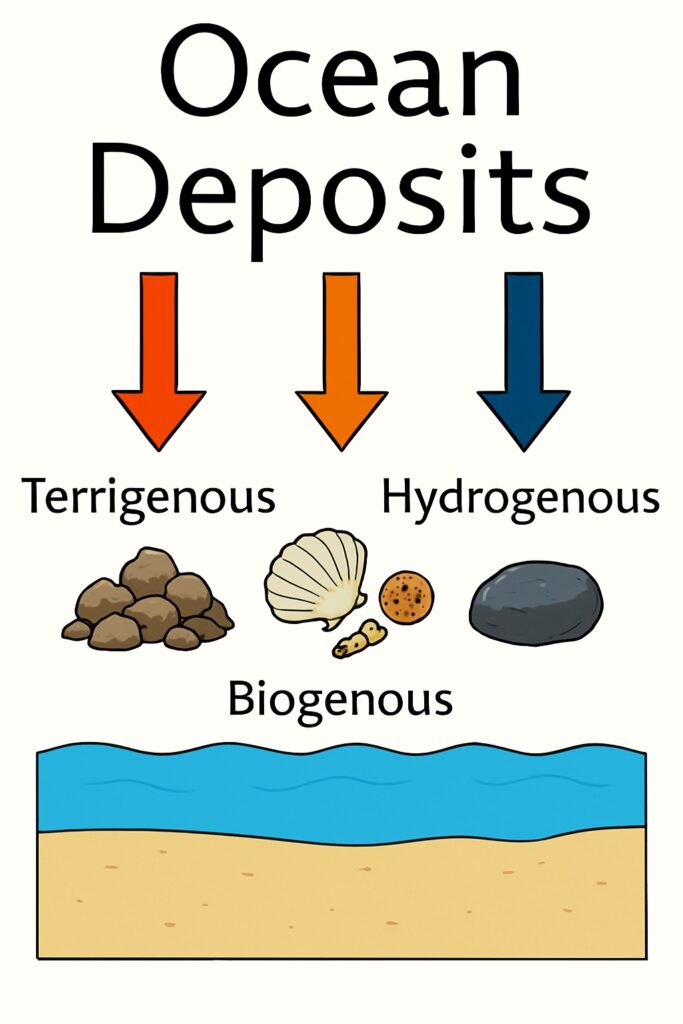Ocean deposits refer to the accumulation of sediments on the ocean floor. These sediments originate from a variety of sources and are transported and deposited by waves, currents, rivers, and biological activity. Ocean deposits provide valuable insights into Earth’s geological history, past climate, marine ecosystems, and plate tectonic processes. They also form important natural resources like oil, gas, and minerals.

Table of Contents
Types of Ocean Deposits
Ocean deposits are broadly classified into three main types based on their origin:
1. Terrigenous Deposits
- These are derived from the land (continental sources).
- Formed by the weathering and erosion of rocks on land.
- Carried to the sea by rivers, wind, glaciers, and gravity.
- Common materials include sand, silt, clay, and volcanic ash.
- Found mostly near continental margins and river mouths.
2. Pelagic Deposits
- These originate in the open ocean, far from land.
- They are finer in texture and accumulate slowly over time.
- Found on the deep ocean floor, especially in basins and abyssal plains.
3. Biogenous Deposits
Biogenous deposits are sediments on the ocean floor that originate from the remains of marine organisms. These deposits are primarily composed of the hard, skeletal parts of microscopic planktonic organisms such as foraminifera, diatoms, radiolarians, and coccolithophores. These organisms extract minerals like calcium carbonate (CaCO₃) and silica (SiO₂) from seawater to build their shells or skeletons. When they die, their remains sink to the ocean floor, accumulate over time, and form biogenic oozes.
Distribution of Ocean Deposits
- Continental shelves mostly contain coarse terrigenous sediments like sand and gravel.
- Continental slopes and rises have a mix of terrigenous and biogenous sediments.
- Deep ocean floors are dominated by pelagic deposits like oozes and red clays.
- The type of biogenous ooze found depends on factors like depth, temperature, and productivity of marine life.
Significance of Ocean Deposits
- Help reconstruct past climates and ocean conditions.
- Indicate plate tectonic movements and seafloor spreading.
- Serve as a source of natural resources such as petroleum, natural gas, phosphorite, and polymetallic nodules.
- Provide important habitats for deep-sea ecosystems.
- Assist in scientific studies related to paleontology, sedimentology, and marine geology.
Conclusion
Ocean deposits are the result of a variety of natural processes that operate both on land and in the ocean. Their composition, location, and rate of accumulation reveal much about Earth’s history and the functioning of marine environments. These deposits not only serve scientific purposes but also hold economic importance due to the resources they contain. Understanding ocean deposits is essential for exploring marine resources and protecting ocean ecosystems.